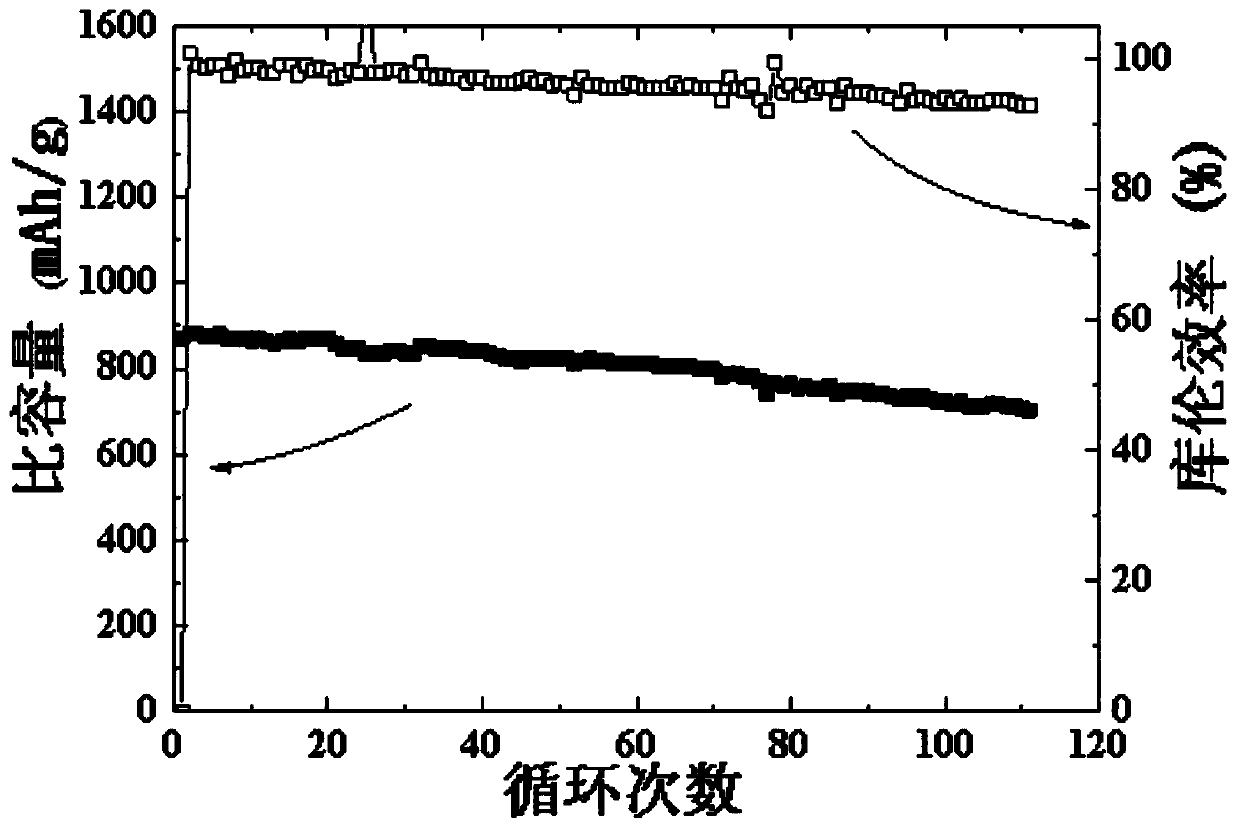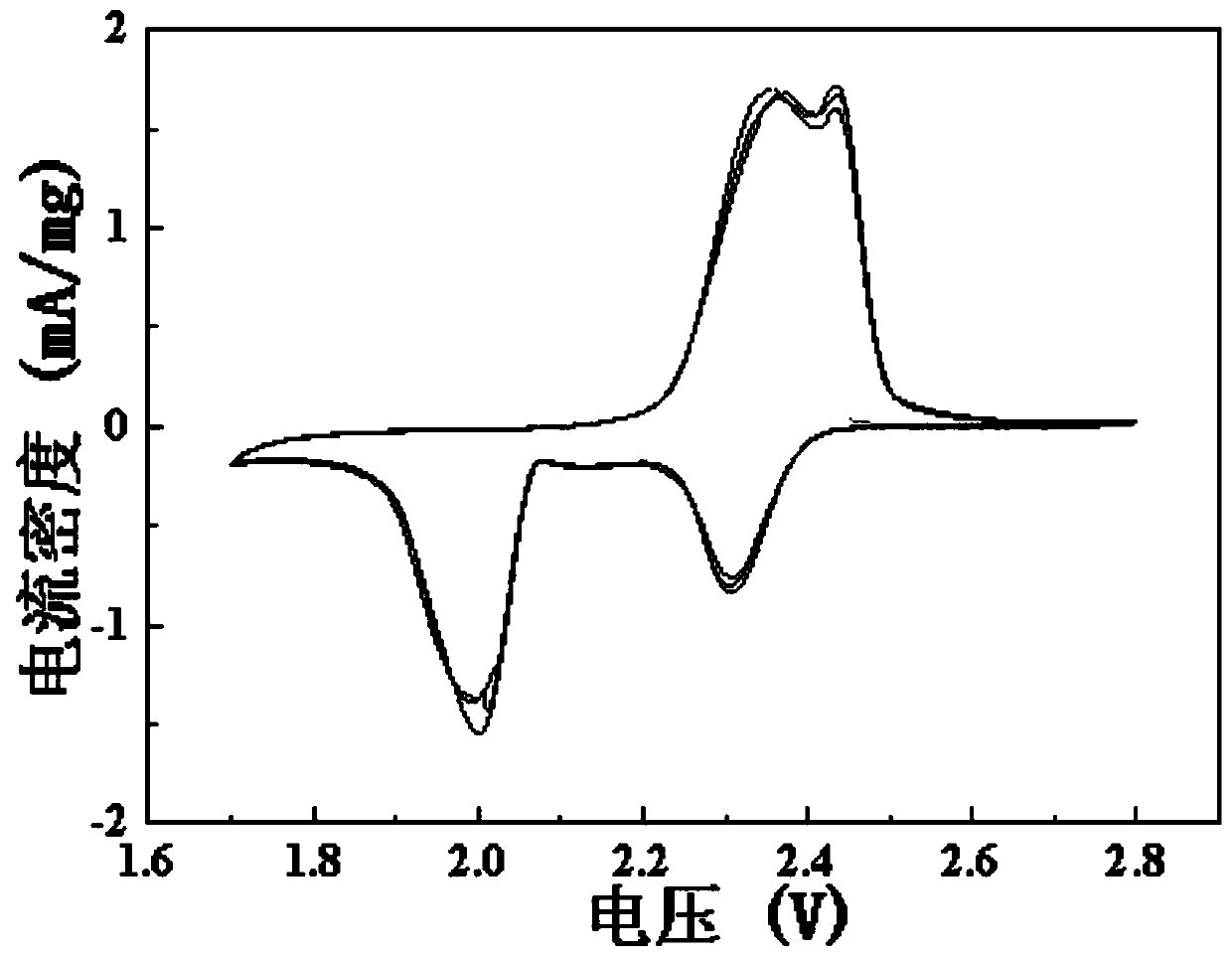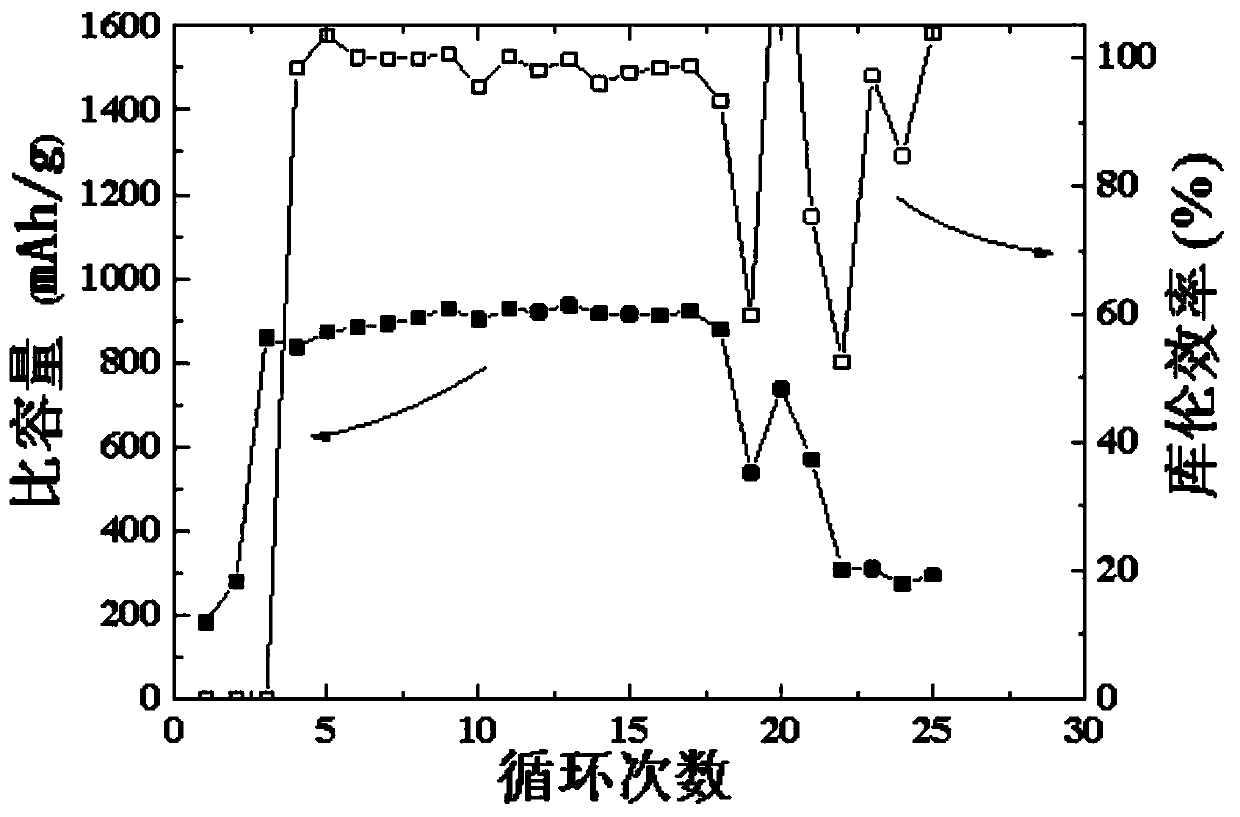Lithium-sulfur battery positive electrode active material with self-repairing function and preparation method thereof
A positive electrode active material, lithium-sulfur battery technology, applied in battery electrodes, lithium batteries, chemical instruments and methods, etc., can solve problems such as destroying the stability of the positive electrode, and achieve the effects of alleviating adverse reactions, long service life, and high safety.
- Summary
- Abstract
- Description
- Claims
- Application Information
AI Technical Summary
Problems solved by technology
Method used
Image
Examples
specific Embodiment approach 1
[0024] Specific implementation mode 1: This implementation mode is a lithium-sulfur battery cathode active material with self-repairing function, which is specifically composed of sulfur and component A-component B;
[0025] The component A is amino silicone oil, chitosan or polyethyleneimine;
[0026] The component B is terephthalaldehyde, glutaraldehyde or trimesaldehyde.
specific Embodiment approach 2
[0027] Embodiment 2: This embodiment is a preparation method of the lithium-sulfur battery cathode active material with self-repairing function in Embodiment 1, specifically according to the following steps:
[0028] 1. Preparation of the self-repairing coating mixture: dissolve component B in the solvent, stir for 1-120 minutes, add component A, and stir for 1-120 minutes to obtain the self-repairing coating mixture;
[0029] The component A is amino silicone oil, chitosan or polyethyleneimine;
[0030] The component B is terephthalaldehyde, glutaraldehyde or trimesaldehyde;
[0031] Described solvent is THF or toluene;
[0032] The volume ratio of the mass of the component B to the solvent is (1mg~1000mg):(1mL~500mL);
[0033] The volume ratio of the mass of the component A to the solvent is (1g~20g):(1mL~500mL);
[0034] 2. Sulfur powder surface adsorption self-repair coating: Grind micron-sized elemental sulfur for 1min to 100min, then add sulfur powder to the self-repa...
specific Embodiment approach 3
[0036] Specific embodiment 3: The difference between this embodiment and specific embodiment 2 is that the volume ratio of the mass of component B described in step 1 to the solvent is (1 mg-1000 mg): 10 mL. Others are the same as in the second embodiment.
PUM
 Login to View More
Login to View More Abstract
Description
Claims
Application Information
 Login to View More
Login to View More - R&D
- Intellectual Property
- Life Sciences
- Materials
- Tech Scout
- Unparalleled Data Quality
- Higher Quality Content
- 60% Fewer Hallucinations
Browse by: Latest US Patents, China's latest patents, Technical Efficacy Thesaurus, Application Domain, Technology Topic, Popular Technical Reports.
© 2025 PatSnap. All rights reserved.Legal|Privacy policy|Modern Slavery Act Transparency Statement|Sitemap|About US| Contact US: help@patsnap.com



